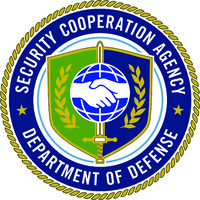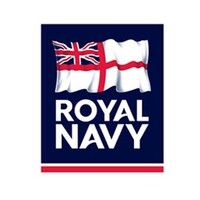
Defense Security Cooperation Agency Company Cyber Security Posture
dsca.milThe mission of the Defense Security Cooperation Agency (DSCA) is to advance U.S. national security and foreign policy interests by building the capacity of foreign security forces to respond to shared challenges. DSCA leads the broader U.S. security cooperation enterprise in its efforts to train, educate, advise, and equip foreign partners. DSCA administers security cooperation programs that support U.S. policy interests and objectives identified by the White House, Department of Defense, and Department of State. These objectives include developing specific partner capabilities, building alliances and partnerships, and facilitating U.S. access. DSCA integrates security cooperation activities in support of a whole-of-government approach; provides execution guidance to DoD entities that implement security cooperation programs; exercises financial and program management for the Foreign Military Sales system and many other security cooperation programs; and educates and provides for the long-term development of the security cooperation workforce. Programs-at-a-glance include: • Foreign Military Sales (FMS) • Foreign Military Financing (FMF) • Institutional Capacity Building (ICB) • International Military Education and Training (IMET) • Humanitarian Assistance, Disaster Relief and Mine Action (HDM) http://dodcio.defense.gov/SocialMedia/UserAgreement.aspx For more information on DSCA, e-mail: [email protected]
DSCA Company Details
defense-security-cooperation-agency
447 employees
21384.0
928
Armed Forces
dsca.mil
2
DEF_6190638
In-progress
Between 900 and 1000
This score is AI-generated and less favored by cyber insurers, who prefer the TPRM score.
 DSCA Global Score
DSCA Global Score.png)

Defense Security Cooperation Agency Company Scoring based on AI Models
| Model Name | Date | Description | Current Score Difference | Score |
|---|---|---|---|---|
| AVERAGE-Industry | 03-12-2025 | This score represents the average cybersecurity rating of companies already scanned within the same industry. It provides a benchmark to compare an individual company's security posture against its industry peers. | N/A | Between 900 and 1000 |
Defense Security Cooperation Agency Company Cyber Security News & History
| Entity | Type | Severity | Impact | Seen | Url ID | Details | View |
|---|---|---|---|---|---|---|---|
| Russian government agencies and industrial entities | Cyber Attack | 100 | 5 | 10/2024 | DEF000101524 | Link | |
Rankiteo Explanation : Attack threatening the organization’s existenceDescription: The Awaken Likho APT group, also known as Core Werewolf and PseudoGamaredon, launched a targeted campaign using a new implant to infiltrate Russian government entities and enterprises. This campaign utilized phishing emails with malicious URLs to distribute the MeshAgent tool, enabling remote system control. An SFX archive concealed the attack by displaying a decoy document while setting up the MeshAgent to maintain a persistent connection with the attackers' server. This allowed for continuous remote access, compromising the integrity of the targeted systems. The attack underscores the evolving threat tactics and sophistication of the APT group. | |||||||
| Ukrainian government agencies and Polish entities | Cyber Attack | 100 | 5 | 10/2024 | DEF000101824 | Link | |
Rankiteo Explanation : Attack threatening the organization’s existenceDescription: The Russian-linked threat actor RomCom targeted Ukrainian government agencies and Polish entities in a sophisticated cyber attack campaign since late 2023. The attacks involved spear-phishing to deliver malware, including an updated variant of the RomCom RAT named 'SingleCamper,' as well as new downloaders and backdoors. Tools were executed for initial network reconnaissance and creating remote tunnels for command and control (C2) communications. The group performed data exfiltration, system reconnaissance, and maintained long-term access for espionage. There is also a potential for ransomware deployment to disrupt operations and generate profit. The impact includes the compromise of government systems and the risk of geopolitical instability due to the nature of the targeted entities. | |||||||
Defense Security Cooperation Agency Company Subsidiaries

The mission of the Defense Security Cooperation Agency (DSCA) is to advance U.S. national security and foreign policy interests by building the capacity of foreign security forces to respond to shared challenges. DSCA leads the broader U.S. security cooperation enterprise in its efforts to train, educate, advise, and equip foreign partners. DSCA administers security cooperation programs that support U.S. policy interests and objectives identified by the White House, Department of Defense, and Department of State. These objectives include developing specific partner capabilities, building alliances and partnerships, and facilitating U.S. access. DSCA integrates security cooperation activities in support of a whole-of-government approach; provides execution guidance to DoD entities that implement security cooperation programs; exercises financial and program management for the Foreign Military Sales system and many other security cooperation programs; and educates and provides for the long-term development of the security cooperation workforce. Programs-at-a-glance include: • Foreign Military Sales (FMS) • Foreign Military Financing (FMF) • Institutional Capacity Building (ICB) • International Military Education and Training (IMET) • Humanitarian Assistance, Disaster Relief and Mine Action (HDM) http://dodcio.defense.gov/SocialMedia/UserAgreement.aspx For more information on DSCA, e-mail: [email protected]
Access Data Using Our API

Get company history
.png)
DSCA Cyber Security News
Defense Security Cooperation Service reaches full operating capability
The Defense Security Cooperation Service will ensure ensuring that security cooperation officers are better prepared to engage with allies ...
India - Indo-Pacific Maritime Domain Awareness
The State Department has made a determination approving a possible Foreign Military Sale to India of Indo-Pacific Maritime Domain Awareness ...
IT Systems Security Cooperation Summit: Enhancing integration among Allies, partners
The five-day summit opened with comprehensive briefings on strategy alignment and broader security cooperation planning, paving the way for ...
DSCA Director Michael Miller to Keynote 2024 GovCon International Summit
Miller will speak at the Potomac Officers Club's inaugural GovCon International Summit on Oct. 10. This is the first-ever event of this global status.
US, Zambia enhance security cooperation and capabilities with UN engagement training
The US Army Southern European Task Force, Africa's (SETAF-AF) civil affairs team in Zambia (CAT Zambia) facilitated a two-week United Nations engagement course.
Steven Harris
Steven Harris currently serves as the Acting Executive Assistant Director for Infrastructure Security at the Cybersecurity and Infrastructure Security ...
State Department OKs $91M Australia FMS for Guided Munitions
The Department of State has approved a $91.2 million foreign military sale to Australia for 54 Guided Multiple Launch Rocket ...
Cyber defence
NATO's focus in cyber defence is to protect its own networks, operate in cyberspace (including through the Alliance's operations and missions), ...
U.S. Embassy Bridgetown Hosts Eastern Caribbean Security Cooperation Workshop
The U.S. Military Liaison Office at U.S. Embassy Bridgetown hosted the annual Eastern Caribbean Security Cooperation Workshop from August ...

DSCA Similar Companies

Air Force Space Command
Air Force Space Command, activated Sept. 1, 1982, is a major command with headquarters at Peterson Air Force Base, Colo. AFSPC provides military focused space and cyberspace capabilities with a global perspective to the joint warfighting team. People More than 40,000 professionals assigned to 13

Royal Navy
At sea, on land and in the air. The Royal Navy is made up of five arms. The might of ships in the Surface Fleet, the aerial strength that is the Fleet Air Arm, the covert Submarine Service, the elite and amphibious Royal Marines, and the civilian fleet central to our effectiveness, the Royal Fleet

U.S. Coast Guard
The mission of the U.S. Coast Guard is to protect the public, the environment, and U.S. economic interests — along the coast and our coastal borders, in the nation's ports and waterways, in international waters, or in any maritime region as required to support national security. As one of the six b

Department of National Defence/Ministère de la défense nationale
The Department of National Defence (DND) is a Canadian government department responsible for defending Canada's interests and values at home and abroad, as well as contributing to international peace and security. DND is the largest department of the Government of Canada in terms of budget as well a

U.S. Air Force Reserve
The Air Force Reserve is an integral component of our Nation's air defense and military support network. Reservists bring knowledge, skills and expertise from their civilian experiences to support critical missions and training around the globe, while working alongside their Active Duty Air Force me

US Army
Welcome to the official U.S. Army LinkedIn page. The U.S. Army’s mission is to fight and win our Nation’s wars by providing prompt, sustained land dominance across the full range of military operations and spectrum of conflict in support of combatant commanders. If you're looking for news about t

Frequently Asked Questions (FAQ) on Cybersecurity Incidents
DSCA CyberSecurity History Information
Total Incidents: According to Rankiteo, DSCA has faced 2 incidents in the past.
Incident Types: The types of cybersecurity incidents that have occurred include ['Cyber Attack'].
Total Financial Loss: The total financial loss from these incidents is estimated to be {total_financial_loss}.
Cybersecurity Posture: The company's overall cybersecurity posture is described as The mission of the Defense Security Cooperation Agency (DSCA) is to advance U.S. national security and foreign policy interests by building the capacity of foreign security forces to respond to shared challenges. DSCA leads the broader U.S. security cooperation enterprise in its efforts to train, educate, advise, and equip foreign partners. DSCA administers security cooperation programs that support U.S. policy interests and objectives identified by the White House, Department of Defense, and Department of State. These objectives include developing specific partner capabilities, building alliances and partnerships, and facilitating U.S. access. DSCA integrates security cooperation activities in support of a whole-of-government approach; provides execution guidance to DoD entities that implement security cooperation programs; exercises financial and program management for the Foreign Military Sales system and many other security cooperation programs; and educates and provides for the long-term development of the security cooperation workforce. Programs-at-a-glance include: • Foreign Military Sales (FMS) • Foreign Military Financing (FMF) • Institutional Capacity Building (ICB) • International Military Education and Training (IMET) • Humanitarian Assistance, Disaster Relief and Mine Action (HDM) http://dodcio.defense.gov/SocialMedia/UserAgreement.aspx For more information on DSCA, e-mail: [email protected].
Detection and Response: The company detects and responds to cybersecurity incidents through {description_of_detection_and_response_process}.
Incident Details
Incident 1: Ransomware Attack
Title: {Incident_Title}
Description: {Brief_description_of_the_incident}
Date Detected: {Detection_Date}
Date Publicly Disclosed: {Disclosure_Date}
Date Resolved: {Resolution_Date}
Type: {Type_of_Attack}
Attack Vector: {Attack_Vector}
Vulnerability Exploited: {Vulnerability}
Threat Actor: {Threat_Actor}
Motivation: {Motivation}
Incident 2: Data Breach
Title: {Incident_Title}
Description: {Brief_description_of_the_incident}
Date Detected: {Detection_Date}
Date Publicly Disclosed: {Disclosure_Date}
Date Resolved: {Resolution_Date}
Type: {Type_of_Attack}
Attack Vector: {Attack_Vector}
Vulnerability Exploited: {Vulnerability}
Threat Actor: {Threat_Actor}
Motivation: {Motivation}
Common Attack Types: The most common types of attacks the company has faced are ['Cyber Attack'].
Identification of Attack Vectors: The company identifies the attack vectors used in incidents through {description_of_identification_process}.
Impact of the Incidents
Incident 1: Ransomware Attack
Financial Loss: {Financial_Loss}
Data Compromised: {Data_Compromised}
Systems Affected: {Systems_Affected}
Downtime: {Downtime}
Operational Impact: {Operational_Impact}
Conversion Rate Impact: {Conversion_Rate_Impact}
Revenue Loss: {Revenue_Loss}
Customer Complaints: {Customer_Complaints}
Brand Reputation Impact: {Brand_Reputation_Impact}
Legal Liabilities: {Legal_Liabilities}
Identity Theft Risk: {Identity_Theft_Risk}
Payment Information Risk: {Payment_Information_Risk}
Incident 2: Data Breach
Financial Loss: {Financial_Loss}
Data Compromised: {Data_Compromised}
Systems Affected: {Systems_Affected}
Downtime: {Downtime}
Operational Impact: {Operational_Impact}
Conversion Rate Impact: {Conversion_Rate_Impact}
Revenue Loss: {Revenue_Loss}
Customer Complaints: {Customer_Complaints}
Brand Reputation Impact: {Brand_Reputation_Impact}
Legal Liabilities: {Legal_Liabilities}
Identity Theft Risk: {Identity_Theft_Risk}
Payment Information Risk: {Payment_Information_Risk}
Average Financial Loss: The average financial loss per incident is {average_financial_loss}.
Commonly Compromised Data Types: The types of data most commonly compromised in incidents are {list_of_commonly_compromised_data_types}.
Incident 1: Ransomware Attack
Entity Name: {Entity_Name}
Entity Type: {Entity_Type}
Industry: {Industry}
Location: {Location}
Size: {Size}
Customers Affected: {Customers_Affected}
Incident 2: Data Breach
Entity Name: {Entity_Name}
Entity Type: {Entity_Type}
Industry: {Industry}
Location: {Location}
Size: {Size}
Customers Affected: {Customers_Affected}
Response to the Incidents
Incident 1: Ransomware Attack
Incident Response Plan Activated: {Yes/No}
Third Party Assistance: {Yes/No}
Law Enforcement Notified: {Yes/No}
Containment Measures: {Containment_Measures}
Remediation Measures: {Remediation_Measures}
Recovery Measures: {Recovery_Measures}
Communication Strategy: {Communication_Strategy}
Adaptive Behavioral WAF: {Adaptive_Behavioral_WAF}
On-Demand Scrubbing Services: {On_Demand_Scrubbing_Services}
Network Segmentation: {Network_Segmentation}
Enhanced Monitoring: {Enhanced_Monitoring}
Incident 2: Data Breach
Incident Response Plan Activated: {Yes/No}
Third Party Assistance: {Yes/No}
Law Enforcement Notified: {Yes/No}
Containment Measures: {Containment_Measures}
Remediation Measures: {Remediation_Measures}
Recovery Measures: {Recovery_Measures}
Communication Strategy: {Communication_Strategy}
Adaptive Behavioral WAF: {Adaptive_Behavioral_WAF}
On-Demand Scrubbing Services: {On_Demand_Scrubbing_Services}
Network Segmentation: {Network_Segmentation}
Enhanced Monitoring: {Enhanced_Monitoring}
Incident Response Plan: The company's incident response plan is described as {description_of_incident_response_plan}.
Third-Party Assistance: The company involves third-party assistance in incident response through {description_of_third_party_involvement}.
Data Breach Information
Incident 2: Data Breach
Type of Data Compromised: {Type_of_Data}
Number of Records Exposed: {Number_of_Records}
Sensitivity of Data: {Sensitivity_of_Data}
Data Exfiltration: {Yes/No}
Data Encryption: {Yes/No}
File Types Exposed: {File_Types}
Personally Identifiable Information: {Yes/No}
Prevention of Data Exfiltration: The company takes the following measures to prevent data exfiltration: {description_of_prevention_measures}.
Handling of PII Incidents: The company handles incidents involving personally identifiable information (PII) through {description_of_handling_process}.
Ransomware Information
Incident 1: Ransomware Attack
Ransom Demanded: {Ransom_Amount}
Ransom Paid: {Ransom_Paid}
Ransomware Strain: {Ransomware_Strain}
Data Encryption: {Yes/No}
Data Exfiltration: {Yes/No}
Ransom Payment Policy: The company's policy on paying ransoms in ransomware incidents is described as {description_of_ransom_payment_policy}.
Data Recovery from Ransomware: The company recovers data encrypted by ransomware through {description_of_data_recovery_process}.
Regulatory Compliance
Incident 1: Ransomware Attack
Regulations Violated: {Regulations_Violated}
Fines Imposed: {Fines_Imposed}
Legal Actions: {Legal_Actions}
Regulatory Notifications: {Regulatory_Notifications}
Incident 2: Data Breach
Regulations Violated: {Regulations_Violated}
Fines Imposed: {Fines_Imposed}
Legal Actions: {Legal_Actions}
Regulatory Notifications: {Regulatory_Notifications}
Regulatory Frameworks: The company complies with the following regulatory frameworks regarding cybersecurity: {list_of_regulatory_frameworks}.
Ensuring Regulatory Compliance: The company ensures compliance with regulatory requirements through {description_of_compliance_measures}.
Lessons Learned and Recommendations
Incident 1: Ransomware Attack
Lessons Learned: {Lessons_Learned}
Incident 2: Data Breach
Lessons Learned: {Lessons_Learned}
Incident 1: Ransomware Attack
Recommendations: {Recommendations}
Incident 2: Data Breach
Recommendations: {Recommendations}
Key Lessons Learned: The key lessons learned from past incidents are {list_of_key_lessons_learned}.
Implemented Recommendations: The company has implemented the following recommendations to improve cybersecurity: {list_of_implemented_recommendations}.
References
Additional Resources: Stakeholders can find additional resources on cybersecurity best practices at {list_of_additional_resources}.
Investigation Status
Incident 1: Ransomware Attack
Investigation Status: {Investigation_Status}
Incident 2: Data Breach
Investigation Status: {Investigation_Status}
Communication of Investigation Status: The company communicates the status of incident investigations to stakeholders through {description_of_communication_process}.
Stakeholder and Customer Advisories
Incident 1: Ransomware Attack
Stakeholder Advisories: {Stakeholder_Advisories}
Customer Advisories: {Customer_Advisories}
Incident 2: Data Breach
Stakeholder Advisories: {Stakeholder_Advisories}
Customer Advisories: {Customer_Advisories}
Advisories Provided: The company provides the following advisories to stakeholders and customers following an incident: {description_of_advisories_provided}.
Initial Access Broker
Incident 1: Ransomware Attack
Entry Point: {Entry_Point}
Reconnaissance Period: {Reconnaissance_Period}
Backdoors Established: {Backdoors_Established}
High Value Targets: {High_Value_Targets}
Data Sold on Dark Web: {Yes/No}
Incident 2: Data Breach
Entry Point: {Entry_Point}
Reconnaissance Period: {Reconnaissance_Period}
Backdoors Established: {Backdoors_Established}
High Value Targets: {High_Value_Targets}
Data Sold on Dark Web: {Yes/No}
Monitoring and Mitigation of Initial Access Brokers: The company monitors and mitigates the activities of initial access brokers through {description_of_monitoring_and_mitigation_measures}.
Post-Incident Analysis
Incident 1: Ransomware Attack
Root Causes: {Root_Causes}
Corrective Actions: {Corrective_Actions}
Incident 2: Data Breach
Root Causes: {Root_Causes}
Corrective Actions: {Corrective_Actions}
Post-Incident Analysis Process: The company's process for conducting post-incident analysis is described as {description_of_post_incident_analysis_process}.
Corrective Actions Taken: The company has taken the following corrective actions based on post-incident analysis: {list_of_corrective_actions_taken}.
Additional Questions
General Information
Ransom Payment History: The company has {paid/not_paid} ransoms in the past.
Last Ransom Demanded: The amount of the last ransom demanded was {last_ransom_amount}.
Last Attacking Group: The attacking group in the last incident was {last_attacking_group}.
Incident Details
Most Recent Incident Detected: The most recent incident detected was on {most_recent_incident_detected_date}.
Most Recent Incident Publicly Disclosed: The most recent incident publicly disclosed was on {most_recent_incident_publicly_disclosed_date}.
Most Recent Incident Resolved: The most recent incident resolved was on {most_recent_incident_resolved_date}.
Impact of the Incidents
Highest Financial Loss: The highest financial loss from an incident was {highest_financial_loss}.
Most Significant Data Compromised: The most significant data compromised in an incident was {most_significant_data_compromised}.
Most Significant System Affected: The most significant system affected in an incident was {most_significant_system_affected}.
Response to the Incidents
Third-Party Assistance in Most Recent Incident: The third-party assistance involved in the most recent incident was {third_party_assistance_in_most_recent_incident}.
Containment Measures in Most Recent Incident: The containment measures taken in the most recent incident were {containment_measures_in_most_recent_incident}.
Data Breach Information
Most Sensitive Data Compromised: The most sensitive data compromised in a breach was {most_sensitive_data_compromised}.
Number of Records Exposed: The number of records exposed in the most significant breach was {number_of_records_exposed}.
Ransomware Information
Highest Ransom Demanded: The highest ransom demanded in a ransomware incident was {highest_ransom_demanded}.
Highest Ransom Paid: The highest ransom paid in a ransomware incident was {highest_ransom_paid}.
Regulatory Compliance
Highest Fine Imposed: The highest fine imposed for a regulatory violation was {highest_fine_imposed}.
Most Significant Legal Action: The most significant legal action taken for a regulatory violation was {most_significant_legal_action}.
Lessons Learned and Recommendations
Most Significant Lesson Learned: The most significant lesson learned from past incidents was {most_significant_lesson_learned}.
Most Significant Recommendation Implemented: The most significant recommendation implemented to improve cybersecurity was {most_significant_recommendation_implemented}.
References
Most Recent Source: The most recent source of information about an incident is {most_recent_source}.
Most Recent URL for Additional Resources: The most recent URL for additional resources on cybersecurity best practices is {most_recent_url}.
Investigation Status
Current Status of Most Recent Investigation: The current status of the most recent investigation is {current_status_of_most_recent_investigation}.
Stakeholder and Customer Advisories
Most Recent Stakeholder Advisory: The most recent stakeholder advisory issued was {most_recent_stakeholder_advisory}.
Most Recent Customer Advisory: The most recent customer advisory issued was {most_recent_customer_advisory}.
Initial Access Broker
Most Recent Entry Point: The most recent entry point used by an initial access broker was {most_recent_entry_point}.
Most Recent Reconnaissance Period: The most recent reconnaissance period for an incident was {most_recent_reconnaissance_period}.
Post-Incident Analysis
Most Significant Root Cause: The most significant root cause identified in post-incident analysis was {most_significant_root_cause}.
Most Significant Corrective Action: The most significant corrective action taken based on post-incident analysis was {most_significant_corrective_action}.
What Do We Measure?
















Every week, Rankiteo analyzes billions of signals to give organizations a sharper, faster view of emerging risks. With deeper, more actionable intelligence at their fingertips, security teams can outpace threat actors, respond instantly to Zero-Day attacks, and dramatically shrink their risk exposure window.
These are some of the factors we use to calculate the overall score:
Identify exposed access points, detect misconfigured SSL certificates, and uncover vulnerabilities across the network infrastructure.
Gain visibility into the software components used within an organization to detect vulnerabilities, manage risk, and ensure supply chain security.
Monitor and manage all IT assets and their configurations to ensure accurate, real-time visibility across the company's technology environment.
Leverage real-time insights on active threats, malware campaigns, and emerging vulnerabilities to proactively defend against evolving cyberattacks.




